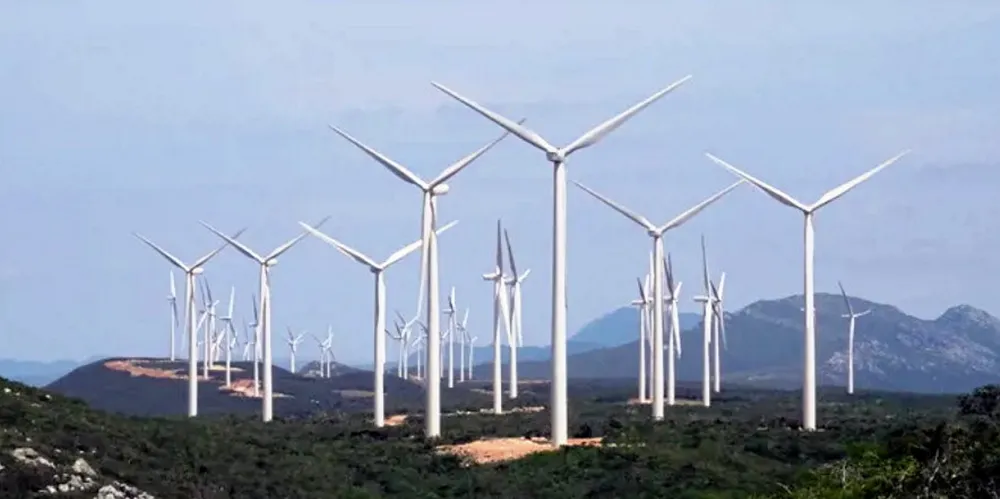Statkraft to host WEG 7MW Brazilian wind turbine as pair eye global opportunities
As interest grows in diversifying pool of OEMs, WEG also sees potential for harnessing Brazilian and Indian supply chains

Brazilian industrial group WEG reinforced its ambitions of entering the first division of wind OEMs after laying down a marker for potential international growth with Norway’s Statkraft, the largest renewable power generator in Europe.
Their cooperation will begin with a project to install a new 7MW onshore wind turbine model that WEG is developing with Brazilian oil giant Petrobras, under a partnership unveiled last September.
Statkraft will not only acquire the turbine for deployment on a Brazilian repowering project, but will also participate in its development, according to the company's vice-president of operations in the South American country, Thiago Tomazzoli.
The wind turbine, which will become one of the largest deployed onshore anywhere outside of China, is expected to become operational later this year and will be installed at Statkraft’s Brotas de Macaubas wind farm complex in the state of Bahia.
WEG said the new "partnership" with Statkraft would facilitate the type certification and installation of the company’s new AGW172/7.X wind turbine.
The current range of WEG turbines marketed in Brazil include the recent but already successful 4.2MW model that, the company says, was designed with local wind and climate conditions in mind.
Development of the 7MW product was originally announced by WEG in July 2022, but the project has gained momentum from the partnerships with Petrobras and now Statkraft.
WEG states that the 7MW model under development is being designed to cater for wider global markets Features include medium-speed geared (MSG) drive technology, combined with a full power drive to help to adapt and comply with different grid codes in each country.
The design also includes modular components such as a taller tower in order to simplify logistics operations and provide an easier assembly concept, particularly for uneven geographic areas, WEG stated.
Announcing the partnership with Statkraft last month, Joao Paulo Gualberto da Silva, managing director of WEG’s energy business unit said: "Our experience in project execution and the wide range of solutions for renewable energy enable us to be a global partner for Statkraft in the wind, solar, hydropower, and new energy segments, such as low-carbon energy storage and hydrogen.
WEG will also provide civil and electrical works on a Brotas de Macauba repowering project.
The new partners made it clear that this initial project is intended to provide a springboard to explore new business opportunities “both domestically and internationally”. India and the US are among the targeted markets.
India and Brazil
The constraints and challenges faced by established OEMs in Europe and the US over the last two years, and geopolitical reluctance in some Western markets to permit the advance of Chinese wind turbiunes in such a strategic sector, has increased the interest in the emergence of new OEMs in big industrialised emerging market countries such as Brazil and India.
Statkraft already controls 18 renewable generation assets in Brazil, including in the wind sector.
In November 2023, Statkraft signed an agreement to acquire Enerfín, the renewable subsidiary of the Spanish company Elecnor, which has nine operational wind farms in the states of Rio Grande do Sul and Rio Grande do Norte.
This acquisition positioned the company as one of the largest wind energy generators in Brazil, surpassing the 2GW installed capacity mark, considering acquisitions, projects under construction and operations in the country.
WEG only began acquiring wind turbine licences in 2022 and acquired a utility scale wind turbine business, including patented technologies, from US-based Northern Power Systems in 2016.
WEG is based in southern Brazil and developed its 4.2MW turbine in partnership with Engie there, but the company also has manufacturing capacity in Hosur, India, where it developed a wind turbine prototype.
The company has outlined plans to develop industrial scale manufacturing capacity for wind turbines in India, as well as stepping up its investments in Brazil.
In addition to their highly prospective markets, Brazil and India offer opportunities to build a highly competitive and integrated supply chain, according to Gualberto da Silva.
(Copyright)